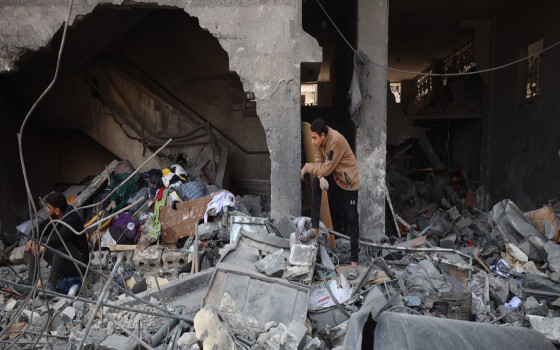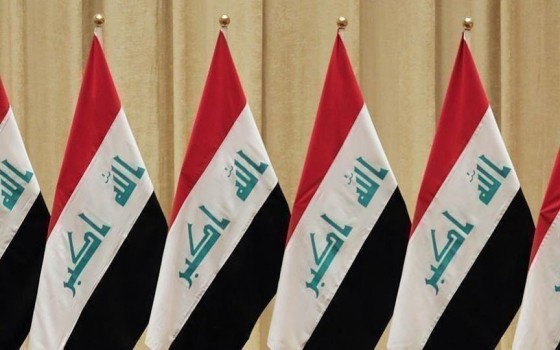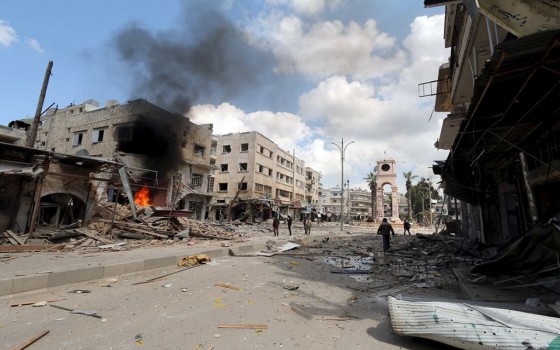
An American newspaper reveals: A plan to divide Gaza into two regions between Israel and Hamas. Trump demanded concrete guarantees for any peace process.

- Europe and Arabs
- Thursday , 23 October 2025 8:24 AM GMT
Washington - Brussels: Europe and the Arabs
The Wall Street Journal reported that the United States and Israel are discussing a plan to divide the Gaza Strip into two separate areas: one under Israeli control and the other under Hamas control. Under the plan, reconstruction efforts would be temporarily allocated to the Israeli-controlled area until Hamas is disarmed and removed from power. According to what was published by the European news network in Brussels, "Euronews," it added, "These ideas were revealed during a press conference in Israel, attended by US Vice President J.D. Vance and the president's son-in-law and advisor, Jared Kushner. They arrived in Israel to pressure both sides to adhere to the existing ceasefire.
Vance said, "There are two areas in Gaza: one that is relatively safe, and one that is very dangerous," adding that the goal is to "expand the geographical area of the safe zone."
Kushner said, "Discussions are now underway regarding the area controlled by the Israeli army, and once it is secured, the process of building a 'new Gaza' can begin, with the aim of giving Palestinians in the Strip a place of refuge, job opportunities, and a place to live."
According to the report, this plan has raised concerns among Arab mediators involved in the peace talks, as they said that the United States and Israel raised the idea during the negotiations. Arab governments have emphasized their explicit opposition to the idea of dividing Gaza, warning that such a step could open the door to establishing a permanent Israeli presence within the Strip. The mediators also explained that the countries Al-Arabiya will not be prepared to deploy security forces in Gaza under this formula.
The newspaper quoted a senior US administration official as saying that these ideas are still "in their preliminary stages," and that more details will be provided in the coming days.
Limits of Israeli Control
The ceasefire agreement brokered by the Trump administration drew a yellow line on the map defining the area controlled by the Israeli military, a buffer zone extending along the Gaza border, surrounding areas still under Hamas control. This zone is supposed to gradually shrink as specific milestones are achieved.
The Core of the Plan and the Disagreement Over the Administration of Gaza
The Wall Street Journal indicates that the core of this plan revolves around how to disarm Hamas and form an alternative authority that can govern the Strip and create a secure environment for billions of dollars in reconstruction investments.
The Trump peace plan stipulates the formation of a technocratic body to govern Gaza, along with the deployment of an international force to provide security, but the details remain unclear. Arab governments believe that the Palestinian Authority should assume control of the Strip, while Israeli Prime Minister Benjamin Netanyahu refuses to give it any role in this process.
The newspaper indicates that Kushner is the primary architect of the plan. "Divided Reconstruction," developed by him and Special Envoy Steve Witkoff, was presented to Trump and Vance and received their support.
Field and Security Obstacles
According to the report, many questions remain unresolved, including how daily services will be administered in areas that Israel may control and the extent of Palestinian willingness to relocate there. Mechanisms are also being discussed to prevent Hamas members from entering the Israeli side, including a security vetting program led by Israeli authorities.
Mediators indicate that the United States may use this plan to buy time while post-war arrangements are finalized.
Meanwhile, Hamas has not committed to disarming and has tightened its security grip on areas outside Israeli control.
Support within Israel and Palestinian Warnings
According to the report, the idea has received support from some Israeli analysts who see it as a way to gradually weaken Hamas. Ofer Guterman, a senior researcher at the Institute for National Security Studies in Tel Aviv, said the plan is "feasible and ideal," noting that it could allow for the expansion of Israeli control and the strengthening of a buffer zone near the border that was attacked by Hamas on 7 October 2023.
Amir Afifi, a former military official, said that this initiative is inspired by previous Israeli plans to create "Hamas-free islands" within the Gaza Strip. He explained that the goal is not to permanently divide Gaza, but rather to pressure Hamas to disarm, anticipating that Israel will expand its control if the movement does not retreat.
Conversely, Tahani Mustafa, a researcher at the European Council on Foreign Relations, warned that any plan to divide Gaza would face strong Palestinian opposition. She said that Palestinians fear a repeat of the West Bank scenario, where Israel imposes comprehensive security control and dismantles Palestinian territories. She added: "Gaza represents the last contiguous geographical area that could form the nucleus of a Palestinian state, and any plan to divide it could achieve what the Palestinians have feared from the beginning."
The Wall Street Journal concluded its report by noting that the Trump administration's demand for Hamas to disarm without providing tangible guarantees for any peace process could lead to a political stalemate that will be difficult to overcome.












No Comments Found